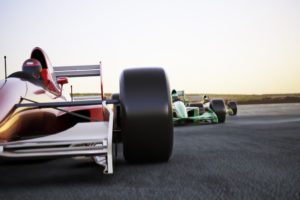 The month of May ends with “The Greatest Spectacle in Racing” – the Indianapolis 500. This year marks the 100th running of the race, and the race organizers have spent considerable time and money updating the facility, which is the largest sporting venue in the world.
The month of May ends with “The Greatest Spectacle in Racing” – the Indianapolis 500. This year marks the 100th running of the race, and the race organizers have spent considerable time and money updating the facility, which is the largest sporting venue in the world.
Maybe it’s the smell of ethanol in the air, but I can’t help but think of the parallels between this event and the current state of digital advertising.
Just as the Indy 500 represents the potential for the most people to watch a race, so too does Google offer the biggest audience for search engine marketers. And recent changes at the storied track have many long-time race fans wondering what to expect when they arrive, just as digital advertisers are trying to navigate the latest updates to Google’s Search Engine Results Page (SERP).
There’s one more important parallel. While drivers yearn to be among the top competitors at Indy, it’s not the only race on their calendar. Digital advertisers likewise have many other options where they can compete.
Who Else is in the Race?
Clearly, Google is the king of search; if you can capture one of the coveted spots it can do wonders for your business.
But what if you can’t? Small and mid-size businesses (SMBs) will have more and more trouble competing as time goes on, and even larger organizations may struggle. It may be worthwhile to consider other channels, such as Bing or YouTube and social-media darlings Facebook and Instagram. These online venues can still yield excellent results. By testing on multiple platforms you can determine whether you need to keep all of your investment on Google, or perhaps can branch out to others where you can gain a more dominant position.
While these channels usually don’t draw the sheer volume of eyeballs that Google commands, many advertisers are nonetheless finding them to be effective.
In my next post, we’ll take a closer look at each up-and-coming channel: Microsoft’s Bing, YouTube and the social platforms Instagram and Facebook.